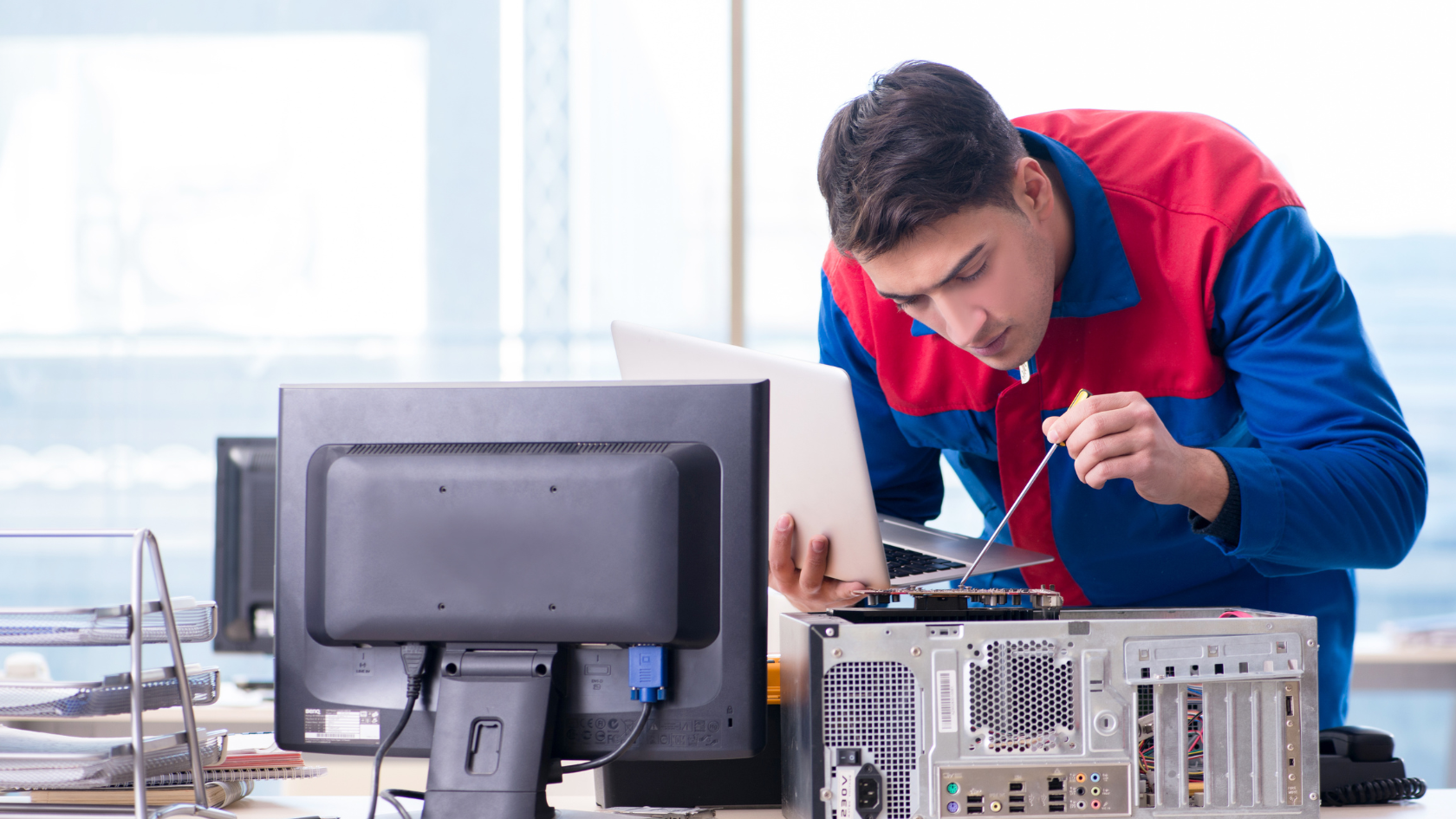Physical Address
304 North Cardinal St.
Dorchester Center, MA 02124
Physical Address
304 North Cardinal St.
Dorchester Center, MA 02124

Welcome to the second tutorial in our series on computer fundamentals. In the previous tutorial, we laid the foundation by discussing the difference between hardware and software. In this installment, we will delve deeper into the world of computer hardware, dissecting the essential components that make a computer tick.
Often likened to the brain of the computer, the Central Processing Unit (CPU) is the workhorse responsible for executing instructions from software programs. It performs calculations and manages data processing. CPUs come in various types and speeds, which significantly impact a computer’s overall performance and efficiency.
Random Access Memory (RAM) serves as the computer’s temporary working memory. It stores data and programs actively in use, ensuring quick access by the CPU. The amount of RAM a computer possesses directly affects its multitasking capabilities and responsiveness
Hard drives are the storage powerhouses where permanent data, including the operating system and files, are stored. HDDs (Hard Disk Drives) rely on spinning disks to read and write data, while SSDs (Solid-State Drives) use flash memory technology, making them faster, more reliable, and increasingly popular.
The motherboard is the central circuit board that houses critical components such as the CPU, RAM slots, and connectors for other hardware devices. Different motherboards support various CPU and RAM types, making it a crucial factor in computer compatibility and performance.
The Power Supply Unit (PSU) is responsible for providing electrical power to all the computer’s components. It takes the electricity from your wall outlet and converts it into the appropriate voltage and current required by the computer’s parts.
The Graphics Processing Unit (GPU), commonly known as the graphics card, handles rendering images and videos on the computer’s monitor. It plays a pivotal role in tasks like gaming, graphic design, and video editing.
While becoming less common with the rise of digital media, optical drives like CD/DVD drives are still used for specific purposes such as software installation, data backup, and reading optical discs.
a. Expansion Slots
Expansion slots on the motherboard provide the flexibility to add additional hardware components, including dedicated graphics cards, sound cards, or network cards. These slots enable customization and expansion of a computer’s capabilities.
b. Ports
Computer ports, both on the motherboard and external casing, serve as connectors to link various peripherals like USB drives, keyboards, mice, and monitors to your computer. The variety and types of ports determine a computer’s compatibility with external devices.
As computers perform tasks, they generate heat, especially in the CPU and GPU. Cooling systems, which consist of fans and heat sinks, are essential for dissipating this heat and preventing components from overheating. Effective cooling systems are critical for maintaining the longevity and reliability of a computer.
To reinforce your understanding of computer hardware, each team member should research and present detailed information on one of the hardware components discussed in this tutorial. This exercise will enhance your knowledge and facilitate more effective troubleshooting, hardware upgrades, and informed decision-making when working with computers.
In this tutorial, we delved into the essential components that constitute the inner workings of a computer. Understanding computer hardware is a fundamental skill for IT professionals, enabling them to navigate the intricacies of computing systems with confidence. Armed with this knowledge, you’ll be better equipped to diagnose and resolve issues, upgrade hardware, and make informed choices when working with computers.
In our next tutorial, we’ll shift our focus to the world of software, exploring different types of software, their applications, and how to install and manage them effectively. Stay tuned!